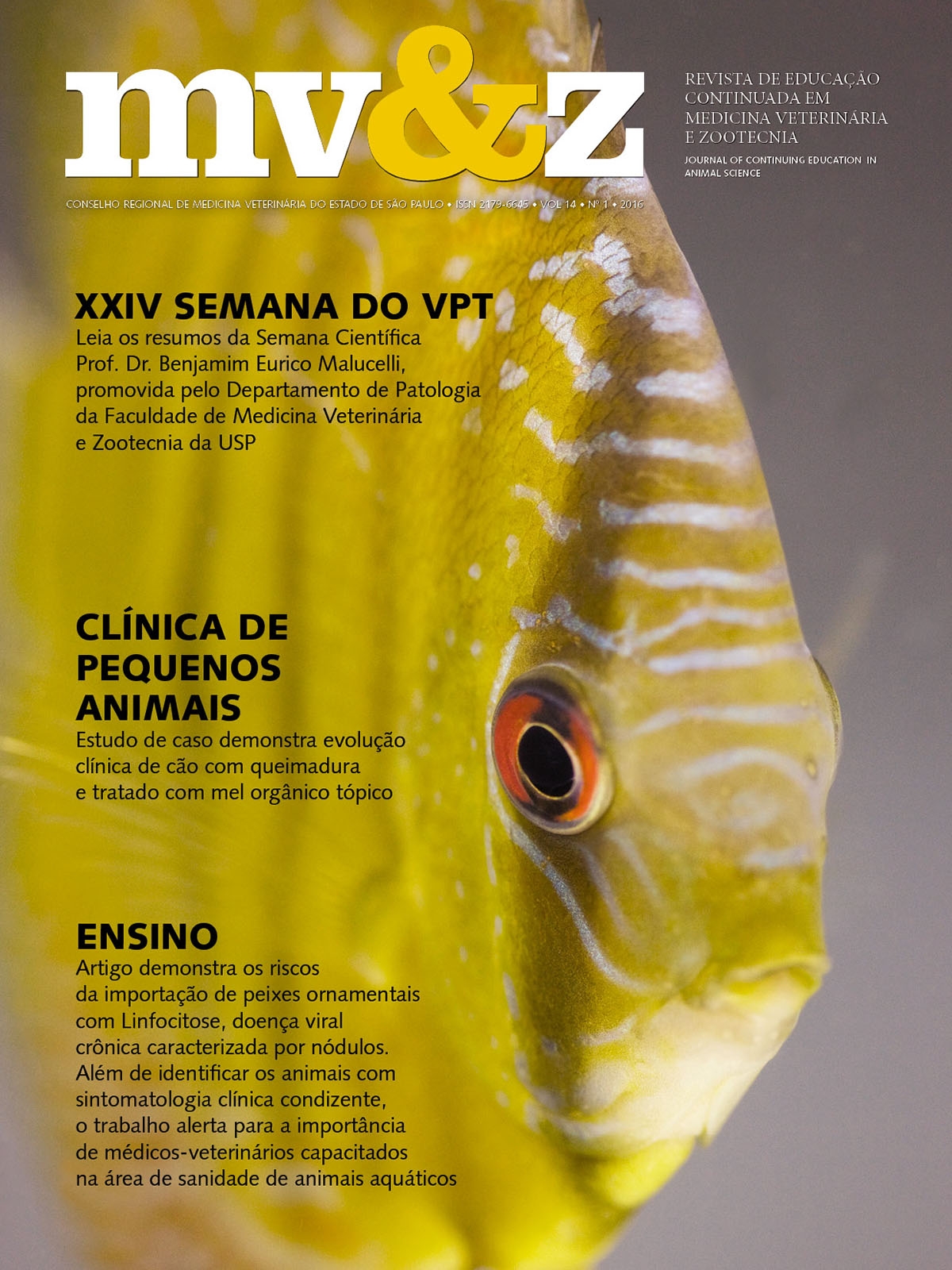Flow cytometry analysis of peripheral blood leukocyte populations in three neotropical snake species
Conteúdo do artigo principal
Resumo
Inflammatory processes are known to protect vertebrates from injuries and infections. However, from an immunological perspective the role of granulocytic and mononuclear leukocytes in snakes’ inflammatory process is poorly understood. In this context, leukocyte classification in these animals is not clearly defined, with authors disagreeing on existent cell types and their classification. Published data on reptilian leukocytes classification differentiates them into five cell groups: lymphocytes, azurophils, heterophils, basophils and monocytes. Nonetheless, the presence of eosinophils in the peripheral blood of snakes is occasionally described; their existence has not been proved in many species, except in Ophiophagus hannah and Naja naja. Azurophils are another leukocyte type in regard to classification. Some authors believe that these cells are merely immature monocytes, while others consider azurophils as cells with unique characteristics and roles, present only in reptiles with lesser numbers in lizards, chelonians and crocodilians, but greater numbers in snakes. Due to the great variation of snakes’ leukocytes on cytochemistry, an analysis focused exclusively on optical morphology is insufficient to determine different cell types. Thus, additional studies and methods, as flow cytometry, are important to better understanding the function and origin of each cell type. The objective of this research was to adapt leukocyte density gradients for snake blood samples, and characterize recovered cells based on size, presence of granules and internal complexity by flow cytometry, enabling the qualitative and semi-quantitative assessment of cells constituting the immune system of Boa constrictor, Bothrops jararaca and Crotalus durissus. Blood samples were collected in tubes containing sodium heparin from 30 snakes (10 of each species: five male, five female). Thus, the fresh blood was centrifuged in the presence of either two commercial density gradients: Ficoll-Paque PLUS® and Percoll®. After centrifugation, leukocytes were recovered and analysed according to size and internal complexity by flow cytometry. Comparison between gradient methods for leukocyte isolation did not show any difference (Kruskal-Wallis-Dunns, p>0.05). Flow cytograms did not evidence differences in the populations distribution between snakes of the same species, especially for mononuclear cells (Skewness and Kurtosis statistical test). When verified by means of flow cytometric cell sorting and confirmed by optical microscopy, populations were mainly composed of small lymphocytes, large lymphocytes, azurophils and heterophils. The investigation identified cell populations and established leukocyte cytograms for these snakes allowing functional and diagnostic assays through flow cytometry.
Detalhes do artigo
Seção
1. Autores mantém os direitos autorais e concedem à revista o direito de primeira publicação, com o trabalho licenciado sob a Creative Commons Atribuição-NãoComercial-SemDerivações 4.0 Internacional
2. Autores têm autorização para assumir contratos adicionais separadamente, para distribuição não-exclusica da versão do trabalho publicada nesta revista (ex.: publicar em repositório institucional ou como capítulo de livro), com reconhecimento de autoria e publicação inicial nesta revista.
3. Autores têm permissão e são estimulados a publicar e distribuir seu trabalho online (ex.: em repositórios instituicionais ou na sua página pessoal) a qualquer ponto antes ou durante o processo editorial, já que isso pode gerar alterações produtivas, bem como aumentar o impacto e a citação do trabalho publicado (Veja O Efeito do Acesso Livre);
